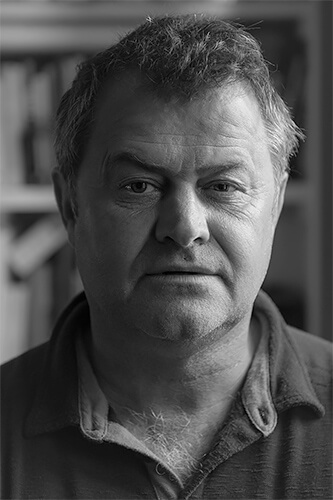Giles Clarke is a photojournalist focusing on capturing the human face of current and post-conflict global issues.
Clarke began his film and photography career in West Berlin as a 16mm camera assistant at the height of the Cold War during the mid-1980s before switching to a successful professional black-and-white photographic printer career in London and New York. In 1997, Clarke worked in the Richard Avedon darkroom in New York on some now-iconic fashion campaigns. From 1998 to 2008, Clarke moved to Los Angeles, where he worked with Channel 4 (UK) on film-based content stories and directed and produced web content for clients such as Budweiser, Hummer, and Cadillac.
In 2007, Clarke began reporting from Bhopal, India on the ongoing toxic legacy of the Union Carbide gas disaster in 1984. His work for the Bhopal Medical Appeal is an ongoing awareness project similar to his environmentally-led work in Louisiana, Haiti, and the gangland areas within Latin America.
In 2013, Clarke was signed by Getty Images Reportage and continues today to syndicate news/feature work through Getty Images as a featured contributor.
In 2016, Clarke traveled with Mr. Ban Ki-moon to over 40 countries documenting the UN Secretary-General's final year of tenure. Also in 2016, Clarke was awarded 1st prize by the National Press Photographers Association for his Haiti work 'Waste In Time' (Environmental Picture Story).
In 2017, he was presented with a Lucie Statue at Carnegie Hall for 'Yemen In Crisis'. Clarke received a Gold Award for his work covering Yemen by PX3 Prix De La Photographie Paris in 2021. In September 2021, 'Yemen; Conflict + Chaos' was exhibited in a solo show at Visa pour L'Image in Perpignan.
In December 2021, Clarke was awarded the 'WARS Photography Award' created by 'Associazione 46 Parallelo / Atlante Delle Wars in Italy.
In October 2022, Clarke was awarded the Sharjah Government Communication Award for his past work in El Salvador.
